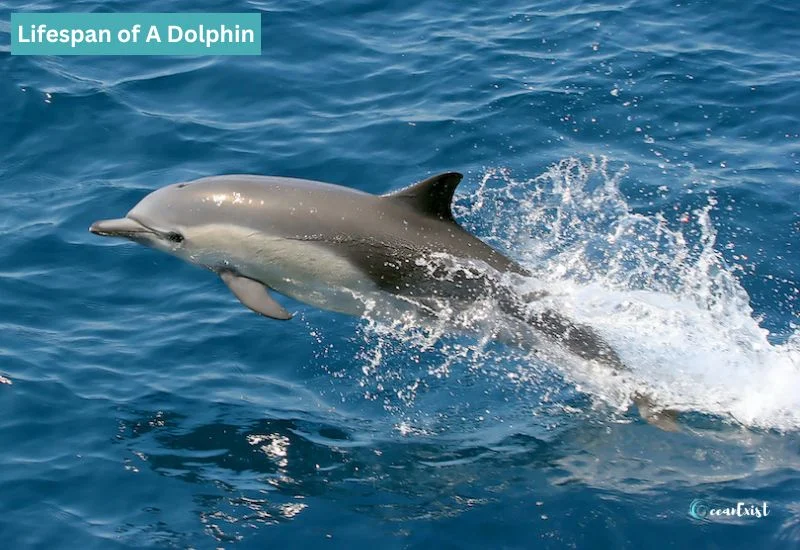Dolphins can live longer, but often, the lifespan of a dolphin depends on the species they belong to. Among different species in the ocean, the wild lifespan of these mammals ranges from 20 to 40 years.
Although some species can live up to 80 years of lifespan, the average range is from 20 to 40 years. While humans typically live between 70 and 85 years, the lifespan of dolphins generally ends by the age of 40. So, it can be said that humans can live longer than they do.
This article provides information on the lifespan of various dolphins and their health problems. The common questions related to the lifespan of dolphins are also addressed. Now, let’s begin.
Life Cycle of Dolphin
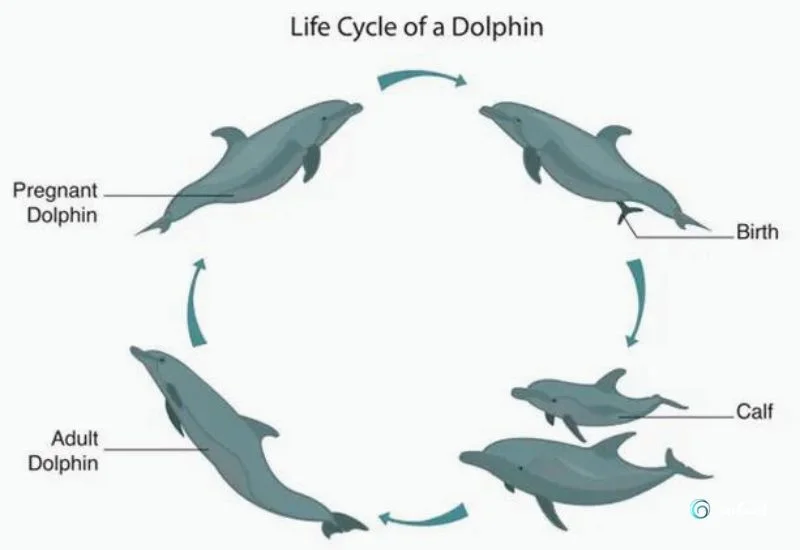
Dolphins are mammals who spend most of their time with other members of their own species. This community is called a Pod. Their life cycle, health, and lifespan depend very much on these pods.
Newborn or Calf
Dolphins keep the baby food in their womb for 12 months. Then, the newborn baby’s tail is the first thing that appears in this world.
The mother dolphin or any of their Pod’s female members take the calf to the surface to make it breathe. The baby breathes and learns to swim within a few minutes but remains under nursing for about two years.
Adolescent Dolphin
Mother or female dolphins keep the calf with themselves for another three to eight years. This is how they protect the newborn baby, and the baby learns to get food under the surveillance of older female dolphins.
Adult Dolphin
When a calf reaches five to ten years of age, this life cycle repeats. The dolphins can reproduce and give birth to offspring every two to three years1.
Bottlenose Dolphins Living in Natural Habitats
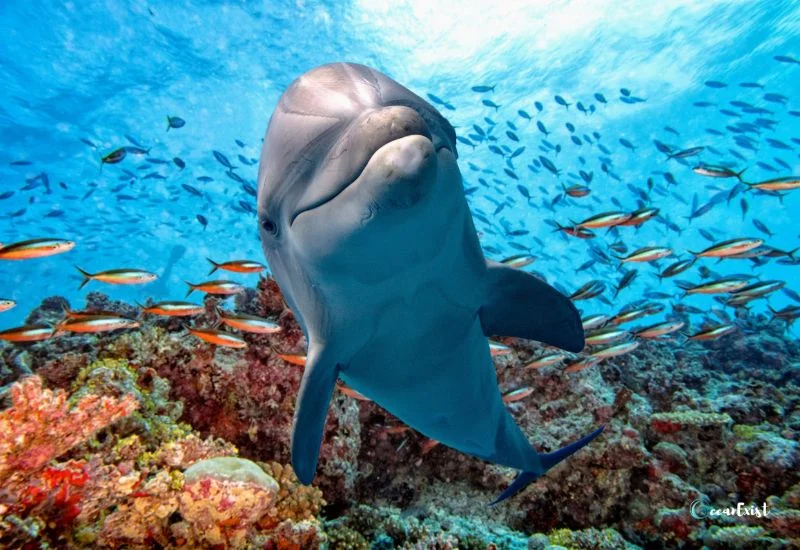
The Bottlenose Dolphins can live up to 40 years in their natural habitat. These mammals are habitual of living in a community. They, together with other fish, hunt, mate, and roam in the ocean.
The oldest dolphin is a female bottlenose named Nicklo. The last time she was photographed at the age of 66 years, in 2016, she lived in the area of Sarasota Bay.
Their lifespan depends much on the healthy environment of Pod. The unnatural behaviors and consistent fights in the Pod may cause a shortening of their ages.
Bottlenose Dolphins Living in Captivity
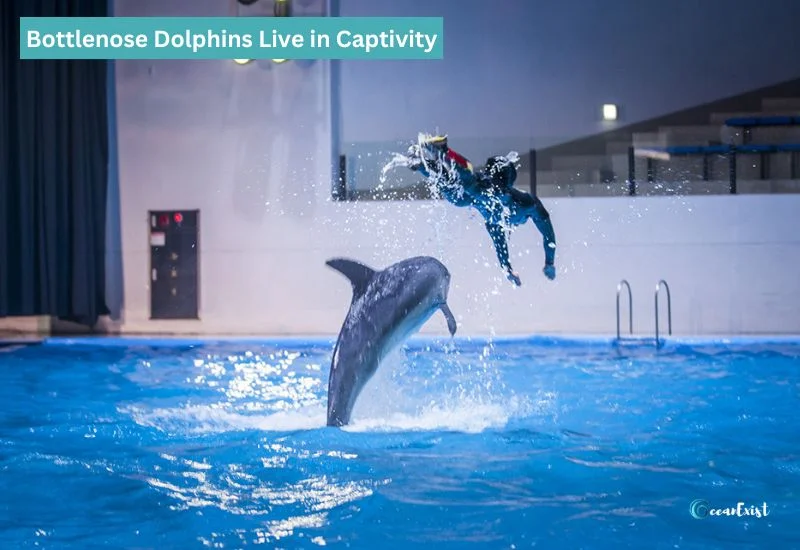
The Bottlenose dolphins do not live much longer in exploitative environments. The death rate increases twice as compared to deaths in the free ocean.
In Miami, there were massive deaths due to trauma and Chronic Pneumonia. Some dolphins are forced to transfer to different sea aquariums, and some are forced to show tricks to humans to get the food.
As we already know, these mammals remain healthy and live longer in Pods. While in a captive environment, they have never had the chance to live with other members of their family, which causes diseases in them that ultimately lead to their death2.
They are biologically designed to swim freely in water. So when they are held in captivity, their activities are limited, and shallow tanks cause some skin diseases in them, due to which their lifespan becomes short.
Dolphins’ Lifespan and Health Problems
1. Unhygienic Food
Humans and dolphins both eat the same seafood, but dolphins are more prone to disease and health problems due to the availability of harmful elements and algae in the water, which mix with the food.
The dolphins are believed to resist insulin, which protects them from diabetes. But, when they wake up, they exhibit no signs of insulin or diabetes. Scientists are studying this unusual phenomenon, and they believe in finding a permanent solution to human diabetes.
2. Predator’s Attacks
Dolphins have the biggest threat from their own family species called Sharks. Sharks are known as killer mammals from the same family. They attack regular dolphins and make them food.
The young calves mostly become the shark’s prey. They cannot swim faster, and they cannot protect themselves alone.
Despite being protected by mothers or other female members, half of newborn babies die due to being attacked and killed by sharks3.
Finding out the Age of Dolphin
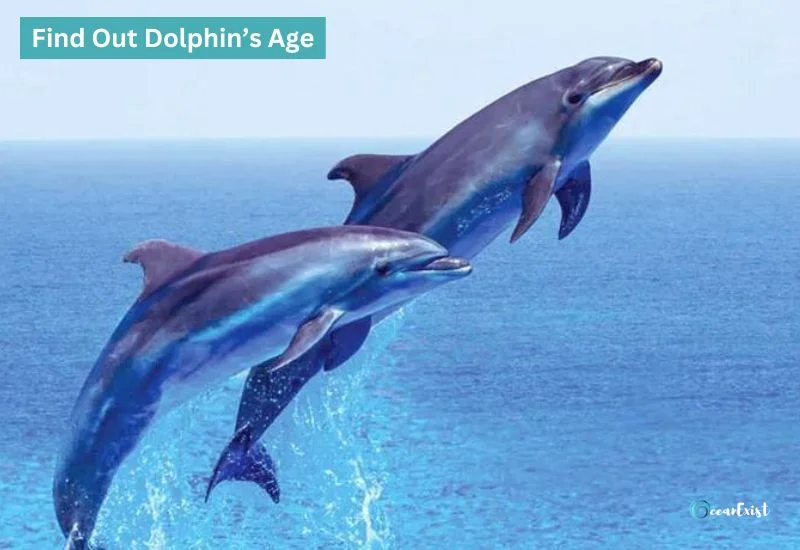
There are various ways to find the age of a dolphin. In these methods, their teeth, blood, skin, or flipper samples are taken, and perform various techniques on them to estimate their age.
The most accurate method of finding the age is the extraction of teeth. In this way, radiographs or x-ray is performed on the sample. With the help of modern computers, their life cycle is determined, reaching their exact ages.
Count of growth lateral groups (GLGs) in the vertical section of the mandibular tooth. It is a perfect method of knowing the age of dolphins that are below thirty years of age. This is due to the staining and sectioning difficulties in visualizing the new GLGs layers, on very old mammals4.
Dolphin’s Age
Dolphin’s life totally depends on the environment it lives in and its Pod’s community members. The Bottlenose dolphin’s average age is 15-16 years. Some do reach an old age of 40 years. But, this is quite unique and similar to humans reaching up to 100 years old.
Conclusion
In conclusion, dolphins are peaceful mammals. Their average lifespan is less than that of humans. This is due to their being caught out in a net or by predators. Now, this blog lets you know about the dolphin’s lifespan, age estimation, and causes of death.
If you have any queries related to this article, do let me know in the comments. Next, read our article related to dolphins’ weight.
Frequently Asked Questions
ARTICLE SOURCES
Oceanexist provides reliable information with good-quality references to support the facts.
- Bottlenose Dolphin.The Australian Museum. ↩︎
- How Long Do Dolphins Live in the Wild and in Captivity?. sentientmedia.org ↩︎
- All About Bottlenose Dolphins – Longevity & Causes of Death .seaworld.org
↩︎ - How to estimate age of old bottlenose dolphins (Tursiops truncatus); by tooth or pectoral flipper? .NOAA IR. ↩︎
